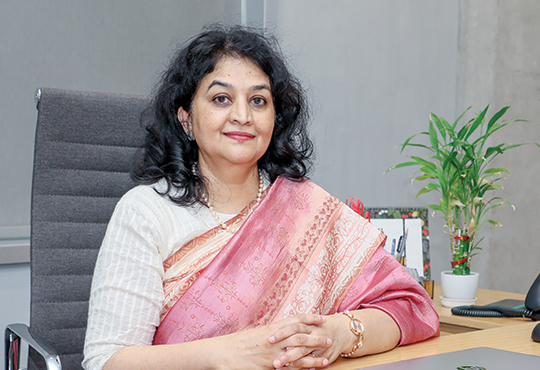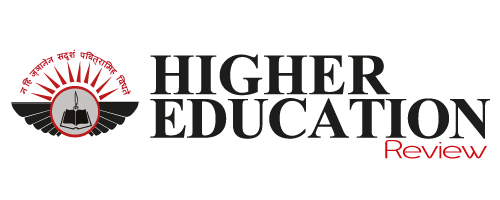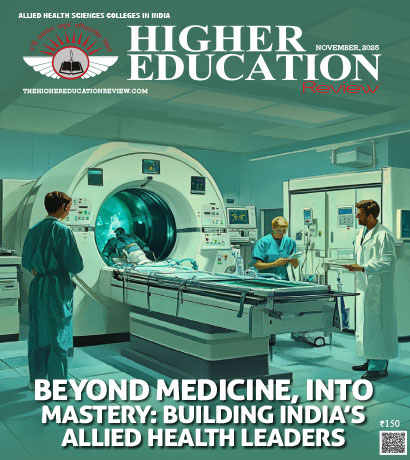Integrating Climate, Health & Sustainability in Higher Education

Suma Nair, Dean, School of Public Health, DY Patil Deemed to be University in an interaction with Raja Ramya, Correspondent, Higher Education Review shared her views on the importance of integrating climate change, health, and sustainability into higher education curricula today, how can universities balance academic rigor with practical, real-world sustainability challenges and more.
With over thirty years of experience in the field Dr Nair has worn multiple hats: community physician, academician, public health researcher and administrator. Her clinical engagements across a range of healthcare settings, complemented by formal training in community medicine, have collectively shaped her commitment to advancing a career dedicated to preventive medicine and public health. She currently heads the school of public health, a constituent unit of the DY Patil Deemed to be University, Navi Mumbai.
Why is it urgent to integrate climate change, health, and sustainability into higher education curricula today? How can universities balance academic rigor with practical, real-world sustainability challenges?
The world is facing a myriad of environment related challenges like never before. Developing countries bearing the brunt of it with increasing pollution levels, population explosion, rapid urbanization, climate change, and so on. As a result, we are witnessing rising cases of heat-related illnesses, malnutrition, infectious diseases, and mental health burdens – amounting to a climate driven health crisis. These are multifaceted issues, involving physical, chemical, biological, social, and economic factors, and clearly an interdisciplinary holistic approach is crucial to devise comprehensive solutions. It is in this context the urgent need to integrate climate change, health, and sustainability into higher education curricula. Graduates who understand these linkages will be better positioned to contribute to sustainable, health-centered solutions that influence policy and practice.
Climate, health and sustainability challenges cannot be taught within the four walls of a classroom. Academic rigor must be integrated with real-world challenges, requiring a balanced dual approach. On the one hand it is essential to cultivate strong theoretical base in core disciplines like climate & Earth sciences, economics and research methods, while on the other incorporating experiential learning in the form of field projects, internships, and problem-based case studies into curricula will ensure that students graduate with strong analytical skills and practical experience.
What role should higher education institutions play in shaping global climate and health policies? Which disciplines should take the lead in embedding climate and health education - medicine, engineering, or social sciences?
Universities and higher education (HE) institutions play a pivotal role in shaping global climate & health policies through multiple avenues. Educating and training future climate warriors or to put it more clearly, a generation of professionals who integrate sustainability and health into practice would be on top of the list. Higher educations are also uniquely positioned to generate scientific evidence on climate impacts, health risks and policy implications, thereby aiding policy makers to design effective interventions.
They can spearhead interdisciplinary collaborations across health, environment, and governance thereby bridging the gap between academia and other sectors. Additionally, universities and higher education institutions can be front runners in showcasing sustainable campus initiatives like green infrastructure (LEED platinum certification) and carbon neutral strategies (no – vehicle & green campus) that demonstrate the feasibility of climate friendly practices within a university eco system. Besides, higher education institutions can lead international dialogues with global bodies thereby influencing policy frameworks to prioritise vulnerable populations. Beyond doubt, universities & HE institutions have a significant role in shaping climate and health policy, at local, national, and global levels.
With reference to the question on which discipline should take the lead – this needs to be addressed from an interdisciplinarity lens — medicine, engineering, social sciences and public health must collaborate to integrate climate and health effectively. Since the crisis is inherently multidimensional, leadership must be complementary, with each discipline lending their unique strengths. For instance, Medicine has a clear role in identifying the health impacts of climate change and managing the emerging challenges. Engineering is essential for designing climate-resilient infrastructure, and innovative technologies that mitigate risks. Social sciences, meanwhile, are critical for understanding community vulnerabilities, driving public awareness, and ensuring that solutions are equitable and culturally appropriate. Finally, Public health with its transdisciplinary approach is uniquely poised to build bridges between medicine, engineering, and social sciences, and act as the facilitator of this convergence within a higher education set up.
What kinds of skills and competencies will graduates need to tackle future climate-health crisis?
As discussed earlier this is a complex multi -dimensional crisis and therefore graduates will need interdisciplinary knowledge. They will need to be equipped with knowledge that spans climate & earth science, epidemiology, environmental engineering, urban planning, and social determinants of health. They will also require quantitative and qualitative research skills, data analytics, spatial mapping and risk modelling.
It is equally important to understand the nuances of community engagement as graduates must recognise vulnerabilities, cultural contexts and inequalities, in order to engage with these communities. Proficiency in advocacy, negotiation, and communication is desirable as that will enable them to collaborate and influence policymakers. A strong grounding in all of these is essential to navigate local adaptation strategies as well as steer global climate health negotiations.
How do we ensure climate and health education reaches marginalized and vulnerable communities?
In order to ensure this, it is imperative to identify the lived experiences of these communities with regard to climate exigencies and their adaptation strategies. This can be carried out through field postings, where students work alongside communities on real climate–health issues such as water & sanitation, waste management and so on. This essentially is a two-way knowledge sharing, where communities provide traditional and local know how and educational institutions the technical insight into the solutions. Further, various accessible methods such as folk media, street plays and roping in grass roots health workers as “community climate champions” could be used to disseminate the right information to the vulnerable and under reached populations. Universities also have the unique opportunity to develop teaching resources and tool kits adapted to local contexts that could be accessed by frontline health workers, community leaders, teachers and so forth so that there is widespread dissemination of knowledge.
Could immersive tools (VR/AR simulations, serious games) make sustainability education more impactful?
Most certainly! Today’s Gen Z learners are a digital native tech savvy cohort, deeply integrating technologies into their life. Tech enabled pedagogy will definitely enhance environment and sustainability education. Virtual Reality (VR) simulations can transport students to real life scenarios like a flood hit city, communities struck with earthquake and so on. This can aid experiential learning, helping them grasp the cause – effect relationships more effectively. Likewise Augmented Reality (AR) simulations and serious games can help learners visualise data, health and policy interventions and their outcomes in a realistic manner rather than the abstract theory. This kind of interactive learning will enhance participation and better learning outcomes. However, these are expensive tools and can only be a supplement. Thoughtful discussions, field work and community engagement are pedagogical hallmarks and should not be replaced at any cost.

